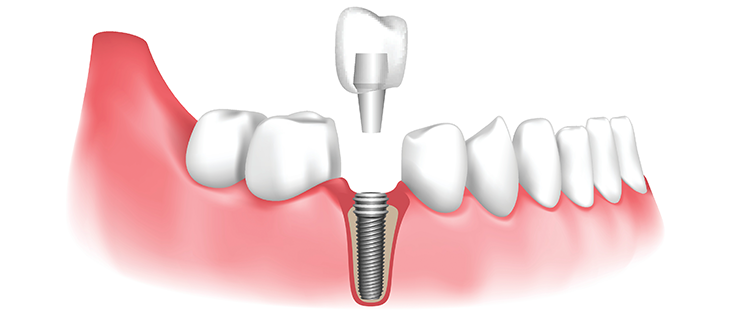Dental Implants: Trends and Innovations to Watch for in 2024

Introduction to Dental Implants
Are you considering dental implants to restore your smile and improve your oral health? As technology continues to advance, so do the trends and innovations in the field of dentistry. In this blog post, we will explore the exciting developments shaping the world of dental implants in 2024. From cutting-edge digital technologies to innovative materials and minimally invasive procedures, let’s dive into what’s on the horizon for dentistry in relation to dental implants. Stay tuned for a glimpse into the future of dentistry!
Current Trends in Dental Implants
The field of dentistry is constantly evolving, with new trends emerging in the realm of dental implants. One current trend gaining traction is the use of digital technology to streamline and enhance the implant process. From advanced imaging techniques to computer-guided implant placement, technology is revolutionizing how dental implants are done.
Another key trend is the development of innovative materials for dental implants. Materials like zirconia and titanium continue to be refined for better durability and aesthetics, offering patients more options than ever before. Additionally, minimally invasive procedures are on the rise, allowing for quicker recovery times and less discomfort for patients undergoing dental implant surgery.
3D printing has also made a significant impact on the dental implant industry by enabling precise customization of implants tailored to each patient’s unique anatomy. As these trends continue to shape the future of dental implants, patients can expect improved outcomes and a more seamless experience when restoring their smiles with this advanced tooth replacement option.
Advancements in Digital Technology for Dental Implants
Imagine a world where digital technology revolutionizes the field of dentistry. With the rise of digital advancements, dental implant procedures have become more precise and efficient than ever before.
Digital scanners now capture detailed images of patients’ mouths, allowing for 3D modeling and virtual treatment planning. This enables dentists to create custom implants tailored to each individual’s unique anatomy with unparalleled accuracy.
Computer-aided design (CAD) software plays a crucial role in designing implants that perfectly fit the patient’s oral cavity. This level of customization ensures optimal aesthetics and functionality, leading to better long-term outcomes for patients undergoing dental implant procedures.
Furthermore, advancements in robotics and artificial intelligence are streamlining implant placement processes, reducing surgery time, and enhancing overall patient comfort during treatment. Digital technology has truly transformed the landscape of dental implants, paving the way for more predictable results and improved patient satisfaction.
Innovative Materials for Dental Implants
With advancements in dental technology, innovative materials for dental implants are paving the way for more durable and natural-looking solutions. One such material gaining popularity is zirconia, known for its strength and biocompatibility. Zirconia implants offer a metal-free alternative that can blend seamlessly with existing teeth.
Another emerging material is titanium-zirconium alloy, combining the strength of titanium with the aesthetics of zirconia. This alloy provides excellent corrosion resistance and biocompatibility while offering a more aesthetic option for patients concerned about visible metal components.
Bioactive ceramics are also on the rise in implant dentistry. These materials promote bone growth and osseointegration, enhancing the long-term success of dental implant procedures. With ongoing research and development, these innovative materials continue to shape the future of dental implant technology, providing patients with safer, more reliable options for restoring their smiles.
The Rise of Minimally Invasive Procedures
With the rise of technology in dentistry, minimally invasive procedures have become increasingly popular for dental implant placement. These procedures involve smaller incisions, less trauma to surrounding tissues, and quicker recovery times for patients.
Minimally invasive techniques utilize advanced imaging technologies like CBCT scans to precisely plan implant placements with optimal accuracy. This results in improved outcomes and higher success rates for dental implants.
By minimizing the invasiveness of surgeries, patients experience reduced post-operative discomfort and swelling. This not only enhances patient comfort but also allows for a faster return to normal activities following the procedure.
The trend towards minimally invasive procedures is expected to continue growing as advancements in technology enable even more precise and efficient techniques for dental implant surgery.
Impact of 3D Printing on Dental Implant Industry
The impact of 3D printing on the dental implant industry has been nothing short of revolutionary. This cutting-edge technology offers precise and customized solutions for patients in need of dental implants.
By utilizing 3D printing, dental professionals can create implants that perfectly match the patient’s unique oral anatomy, leading to improved outcomes and patient satisfaction.
The ability to design and produce implants with intricate details that were once difficult to achieve through traditional methods is a game-changer in the field of dentistry.
Moreover, 3D printing allows for faster production times and more cost-effective solutions, making dental implants more accessible to a larger population.
As this technology continues to evolve, we can expect even more advancements that will further enhance the quality and efficiency of dental implant procedures.
Predictions for the Future of Dental Implants
As we look ahead to the future of dental implants, several exciting developments are on the horizon. One key prediction is that advancements in regenerative medicine may lead to the growth of natural teeth using stem cells, potentially revolutionizing tooth replacement procedures.
Furthermore, it’s likely that there will be a greater focus on personalized treatment plans tailored to each patient’s unique oral health needs. This could involve leveraging artificial intelligence and big data analysis to optimize implant placement and ensure long-term success.
In addition, miniaturization of implant components may pave the way for even smaller and more discreet implants, enhancing both aesthetics and comfort for patients. Moreover, bioactive coatings on implants could promote faster healing and integration with surrounding tissues.
The future of dental implants holds immense promise for improved outcomes and patient satisfaction. Stay tuned as these predictions unfold in the coming years!
Conclusion
In the constantly evolving field of dentistry for dental implants, it’s clear that innovation and technology are driving significant advancements. From digital solutions to innovative materials and minimally invasive procedures, the landscape of dental implants is being reshaped.
As we look towards 2024 and beyond, the future of dental implants seems promising. With continued research and development in 3D printing technology, personalized treatment plans will become more accessible. The integration of artificial intelligence may further streamline processes and enhance precision in implant placements.
Patients can expect faster healing times, improved aesthetics, and enhanced long-term outcomes as these trends continue to unfold. Dentists who embrace these innovations stand to provide superior care and a higher quality of life for their patients.
The future of dentistry for dental implants holds great potential to revolutionize oral healthcare practices and elevate standards across the industry. Stay tuned for exciting developments in this dynamic field!



